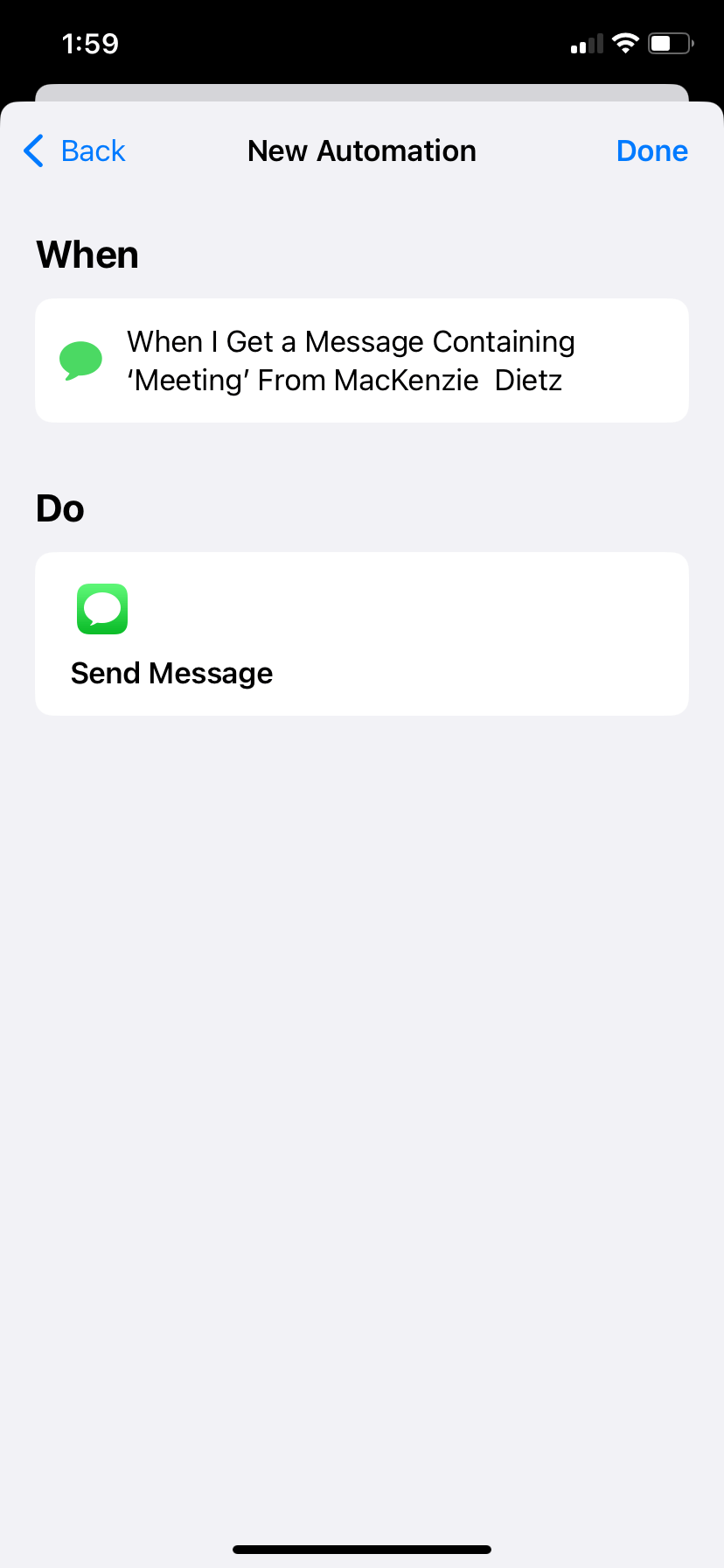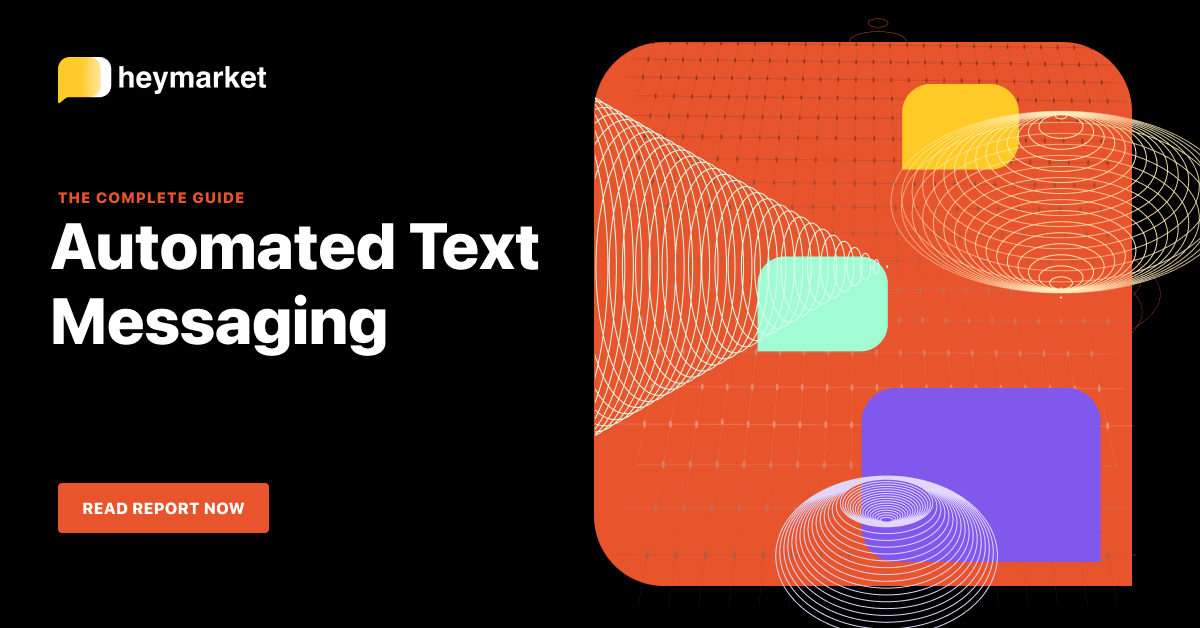Texting is one of the fastest and most effective ways to reach today’s customers. With conversion rates 40% higher than other channels and a 209% higher response rate than phone, email, or Facebook, it’s a go-to tool for marketing, customer service, and sales.
But as more communication happens over text, businesses need a scalable way to deliver personalized, targeted messages that resonate with leads and drive engagement—without adding administrative burden.
That’s where automatic texts (or automated text messages) come in. These messages are sent automatically when specific events happen, like a demo completion or a customer question. They help marketing teams create targeted campaigns, and allow sales and support teams to automate follow-ups, FAQs, and more.
With a bit of preparation and setup, automatic texts can help you connect with more people in a personal way while saving time and streamlining your workflows. In this guide, we’ll cover:
- How to send automatic texts for your business
- How to automate texts on your personal phone
- Examples of automated text messages

For a deeper look at automated texts, check out our guide.
Get the guideHow to send automatic text messages
Automatic texts are usually associated with business texting platforms, which provide the essential software that controls automation workflows. Business texting platforms offer features to help you send one-to-many or mass texts, manage contacts, integrate with other business platforms, secure message and contact data, and more. They’re suited to professional settings.
Modern platforms like Heymarket even support advanced triggers and conditions, letting you automate messages based on key contact updates or behaviors. That means more precise targeting and better timing, without extra manual effort.
You can also send basic automated text messages from your personal phone, but your options are geared toward your private life. For example, personal phone automation triggers can include your location or morning wake-up alarm.
Here’s how to set up automations through both business platforms and on your personal phone.
Automating texts via a business platform
An automated text sent through a business texting platform has three key parts: a trigger, an action, and an SMS template.
A trigger is what starts the automation. It’s the event or condition your platform watches for, like a keyword in a message or a specific time of day. With Heymarket’s enhanced automations, triggers can be more dynamic. For example, you might send a text automatically when a customer reaches VIP status, has a birthday coming up, or joins a specific list.
An action is the action your platform takes when the trigger is activated, like sending a message or survey, or adding or removing a contact (for drip SMS campaigns). You can chain multiple actions together or add delays between them for more advanced workflows.
Advanced automations can also use conditional logic, like triggering only when multiple contact fields meet certain criteria or sending follow-ups only if there’s no response. For example, if someone’s on the VIP list and it’s their birthday, you can send them a different text with a higher discount than a non-VIP would receive.
An SMS template is a reusable text message. For personalized messaging, templates usually include custom fields that insert customer information automatically. This can include their name, appointment date, order number, and most other fields in your customer profiles.
These three parts work together to create an automated text message that sends at just the right moment.
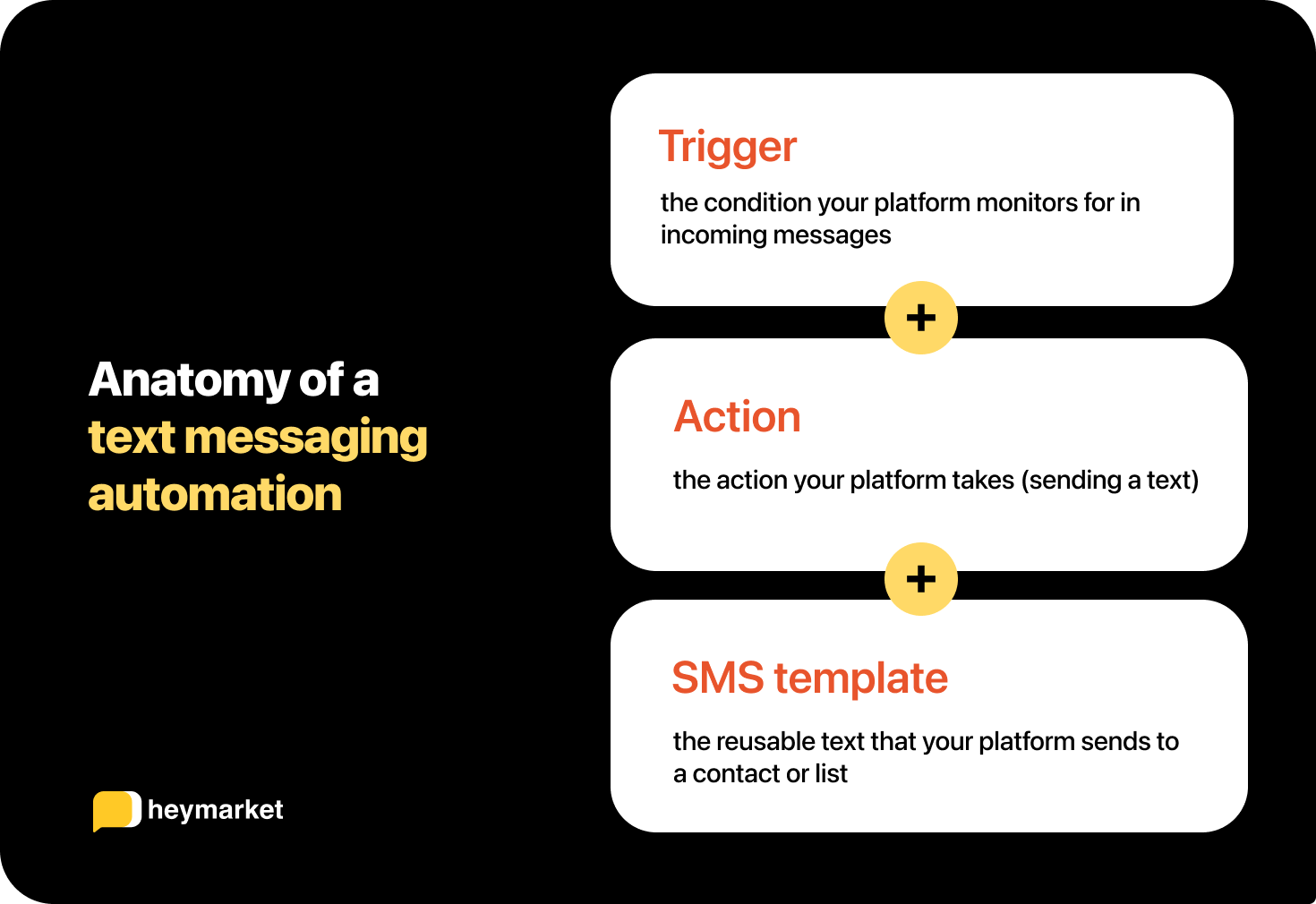
Setting up automatic texts should be easy. The process may differ depending on your platform of choice, but it should look something like this:
- Navigate to Automations in your texting platform, and select the option to create a new automation.
- Choose your trigger. Select your trigger from the platform’s list. Remember: this is what will kick off the automated text. You might choose a keyword, list membership, or contact field change.
- Choose an action. Decide which action you’d like the platform to take. In this case, you’ll select the option to send a message.
- Choose your SMS template. To send an automatic text, you’ll need to create or select an SMS template. Remember to use custom fields so your platform can insert each customer’s details upon sending.
- Test the automation. Text your business line with your personal phone, and ensure you get the correct response. (Remember to use the right keyword in the right time frame!)
Once it’s live, the automation will run every time the condition is met.
As you get more comfortable, you can build additional automations for tasks like follow-ups, reminders, and routing.
Setting up automated SMS drip campaigns
SMS drip campaigns combine elements from both automated and scheduled texts. (Scheduled texts are manually set to send at a specific time and date. Once scheduled, they won’t send again without your help.)
Drip campaigns send a sequence of texts spaced out over time, often days apart. They’re perfect for guiding contacts through a multi-step journey, like a welcome series or post-purchase follow-up.
Here’s the process for creating an SMS campaign and setting up a subsequent automation:
- Create a list of contacts who will receive the templates. Note: You don’t need to add contacts to the list yet, because you’ll be using your automation to do that.
- Navigate to Campaigns in your business texting platform, and choose the option to create a new campaign.
- Choose the “Days Apart” sending schedule. This means that your sequence of messages will send based on the amount of days since the trigger.
- Choose additional campaign settings. For example, you might select the option to remove contacts who reply from the campaign, or not enroll contacts who are already in active campaigns.
- Create or adjust the SMS templates you’d like to send.
- Choose your list of contacts who will receive the templates.
- Navigate to the Automations tab in your texting platform, and choose the option to create a new automation.
- Choose your trigger. Choose from the list of triggers, e.g. a keyword in an incoming message.
- Select an action. Decide which action you’d like the platform to take. In this case, you’ll choose “Add to List.” You’ll choose the list you created for the drip campaign earlier.
- Test the automation. Test the trigger with your personal phone, and make sure you receive the first text of the drip campaign!
With enhanced automations, you can also build these campaigns to respond to real-time contact field changes. Use custom field updates as triggers, personalize each message with dynamic data, and introduce smart delays between texts to keep the conversation natural and engaging.
When you’re testing your automated SMS drip campaign, stay enrolled until you receive several of the campaign messages. That way, you can ensure the entire campaign runs smoothly.
Setting up cross-platform SMS automations
Cross-platform SMS automations are also different. In fact, you’ll probably set them up in your third-party platform. Here’s an overview of setting up a cross-platform automation with your CRM:
- Integrate your SMS platform with your CRM. The integration process involves mapping your custom fields between platforms. This is an important step!
- Build your text automation just like you would any other CRM automation. For example, in HubSpot, you can simply start crafting a workflow. The SMS integration will populate texting as a new option. To send texts from Salesforce automatically, you can incorporate texts in workflows using Flows or Journey Builder.
- Test your automation. Test your automation by activating the trigger with your personal phone. If the workflow starts with an email, send that first.
Cross-platform SMS automations are a game-changer. They unleash endless automation possibilities, empowering you to automate just about any message you can imagine.
Automatic text examples for businesses
Seeing automatic texts in action can help you create yours. Here are some common automatic text types and examples, including trigger messages or actions.
Keyword-based text automation
These texts are triggered when your texting platform recognizes a specific keyword in an incoming message. Keyword-based automations are useful for FAQ replies and objection responses. Here’s an FAQ auto reply text message example:
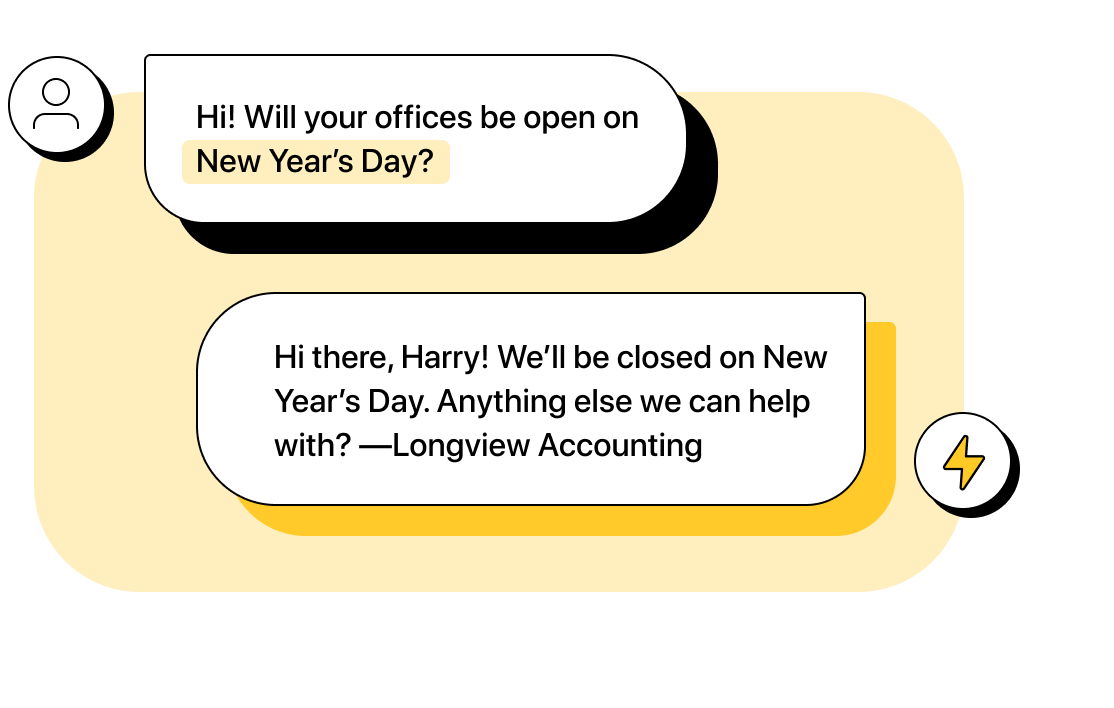
First incoming message text automation
These texts are triggered when a new contact initiates their first conversation. They’re a powerful way to greet your new contacts or confirm their opt-ins. Here’s what an automated welcome text for a new contact looks like:
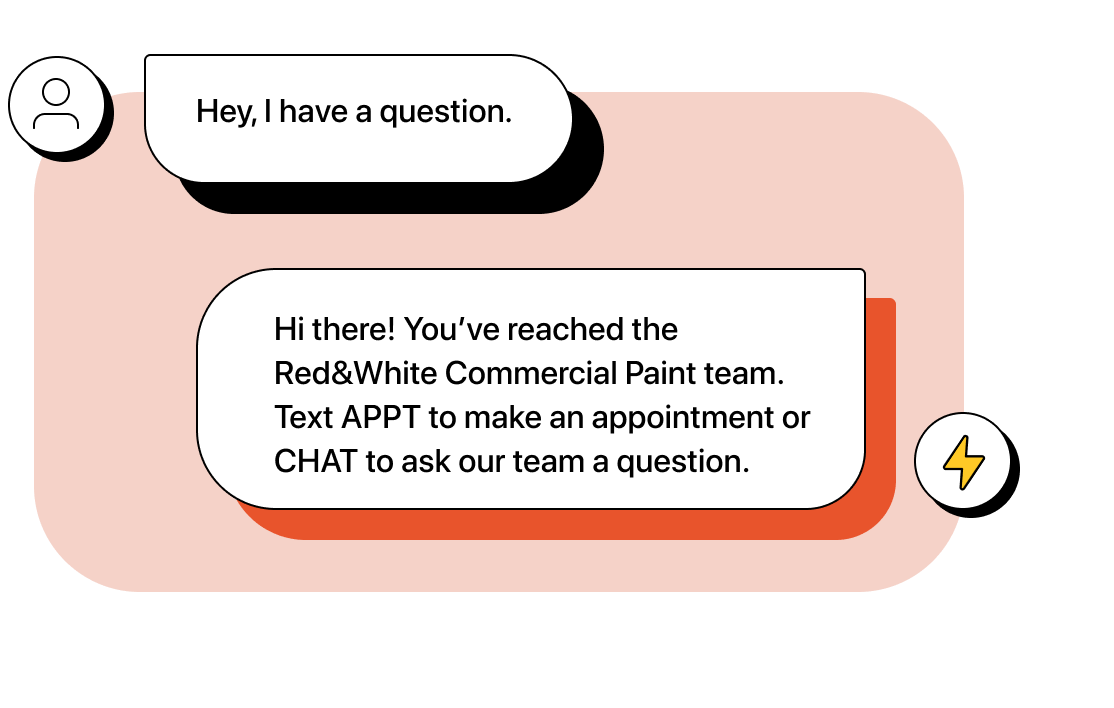
Time-based text automation
These texts are triggered when incoming messages are received at predetermined times. Use them for after-hours auto replies and during-hours replies. An after-hours auto reply might look like the following example:
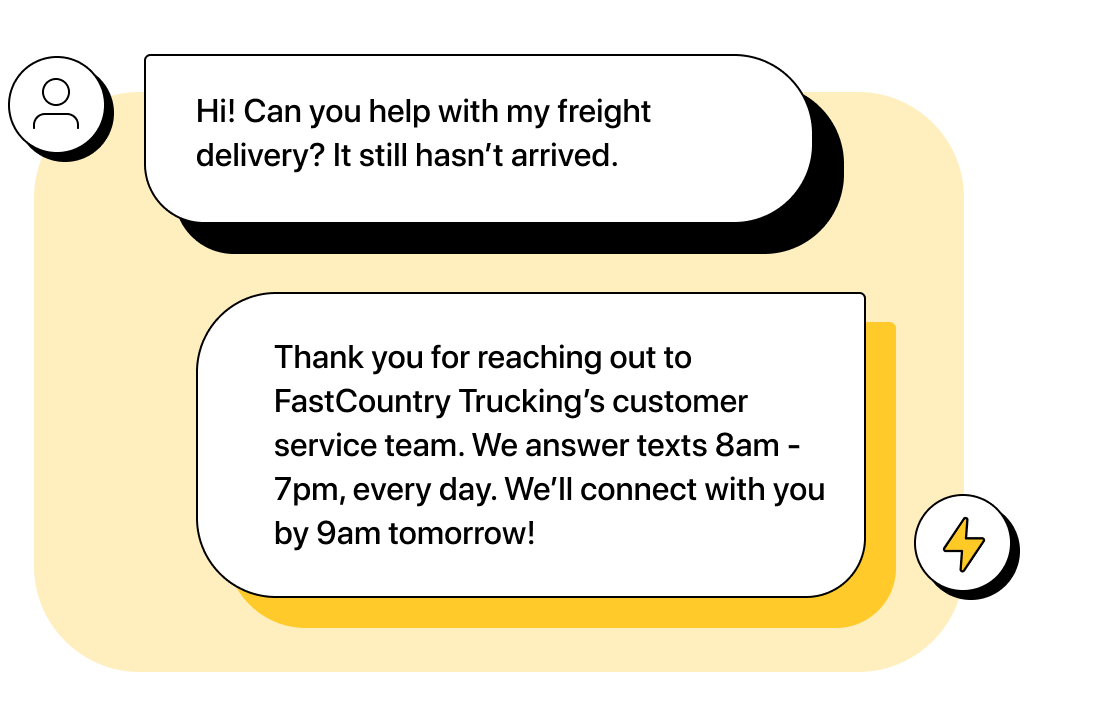
Channel-based message automations
You can set up automations based on the messaging channel your contacts are reaching out through. Here are two versions of the same responses to contacts who text a simple greeting. In this case, the automation triages the conversation.
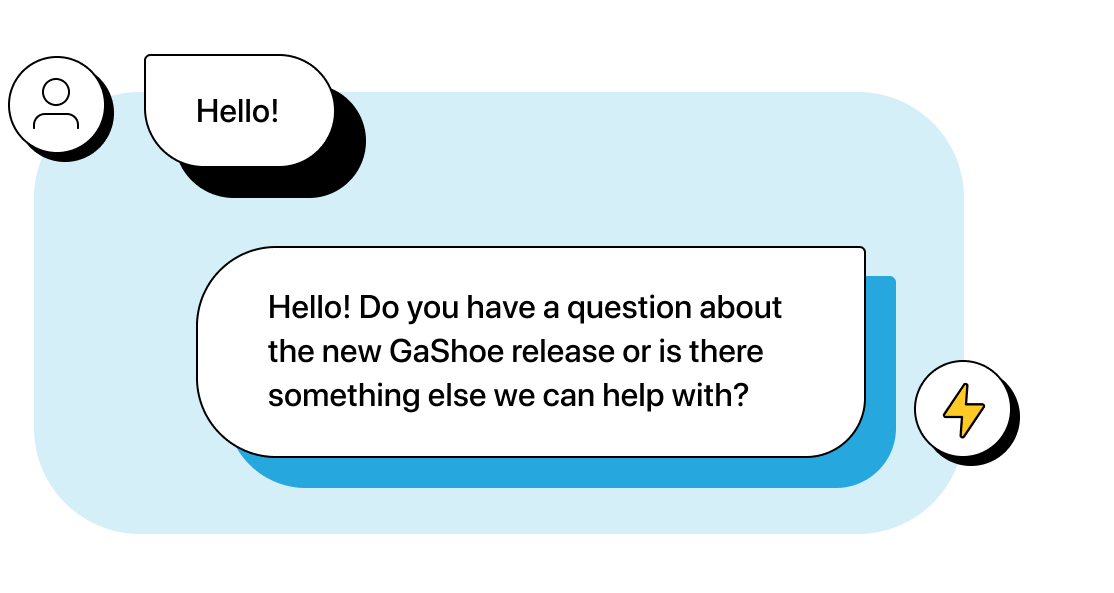
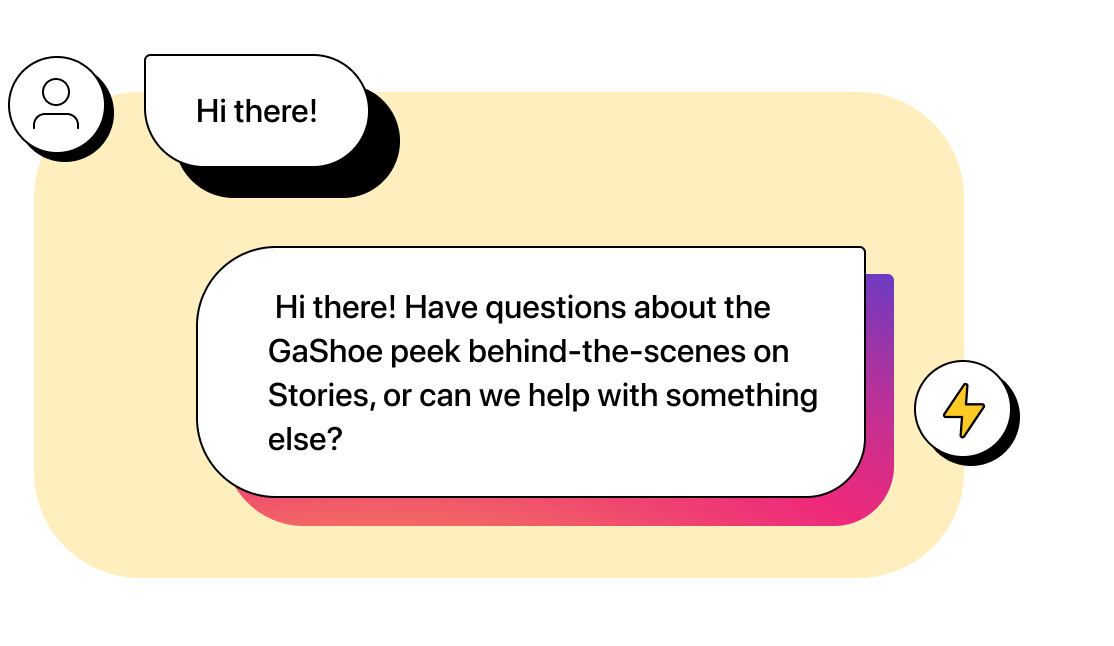
Custom field-based text automation
These texts are triggered when a contact field—like a birthday, purchase total, or subscription status—matches a set condition. They’re ideal for sending personalized messages based on real-time data in customer profiles and keeping contacts engaged, feeling valued, and coming back for more.
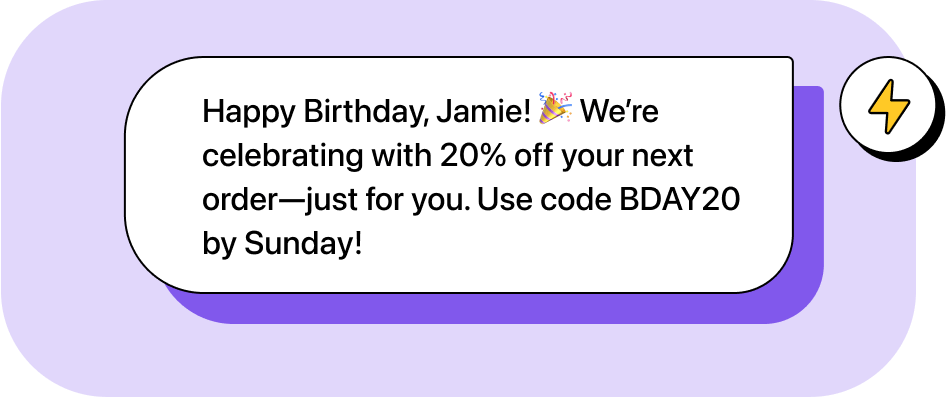
No-response follow-up automation
Send these messages when a contact hasn’t replied within a certain period. Use them to re-engage leads, keep conversations moving, or follow up after outreach, especially when their reply is time-sensitive.
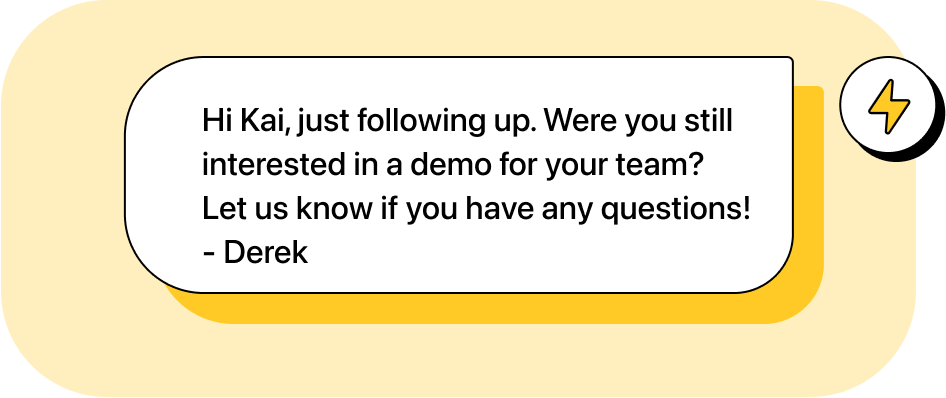
Delayed reminder automation with conditional follow-up
You can automate sequences with built-in delays between messages to stay connected without spamming. Even better: you can also set conditions so that messages only send if the contact hasn’t responded. These are useful for appointment reminders or confirmation flows.
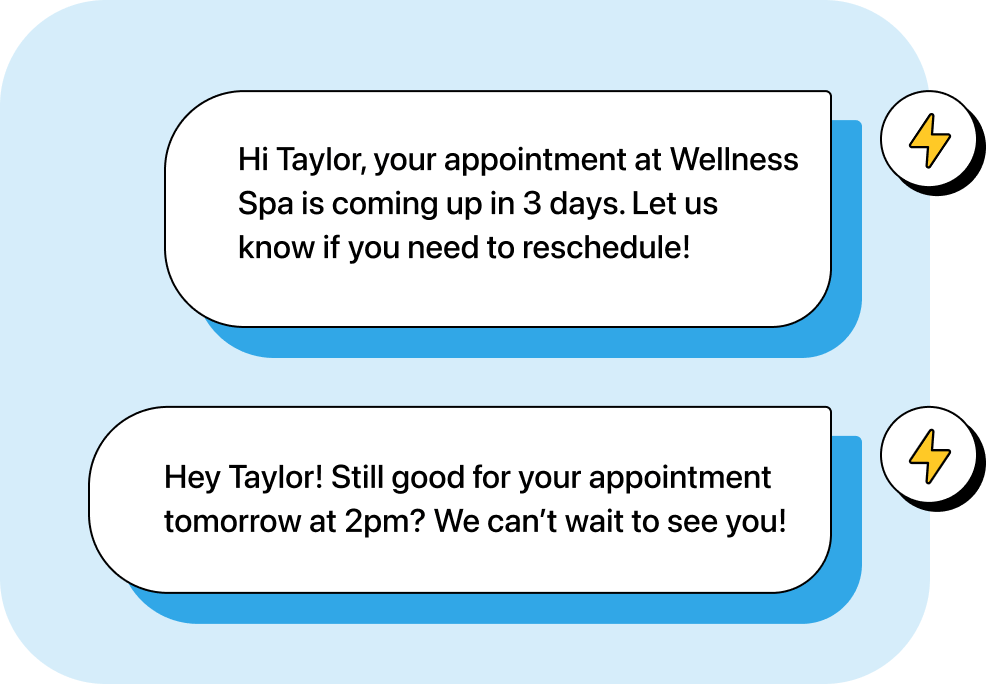
Cross-platform text automation
These texts are triggered when an event occurs in an integrated platform, like a CRM. They’re great for order notifications and demo follow-ups. You’ll create most cross-platform workflows in your third-party platform (e.g., your CRM). Here’s an example of text triggered in reaction to a CRM custom field changing from Demo Scheduled to Demo Completed.
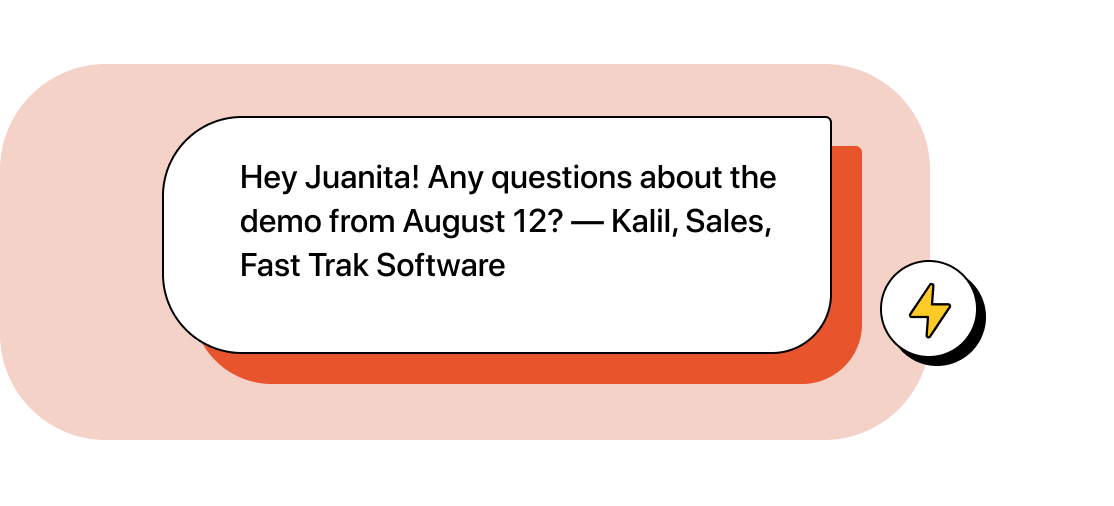
Automated SMS drip campaign
SMS drip campaigns can be triggered by any of the above triggers. Here’s an example of an automated marketing drip campaign:
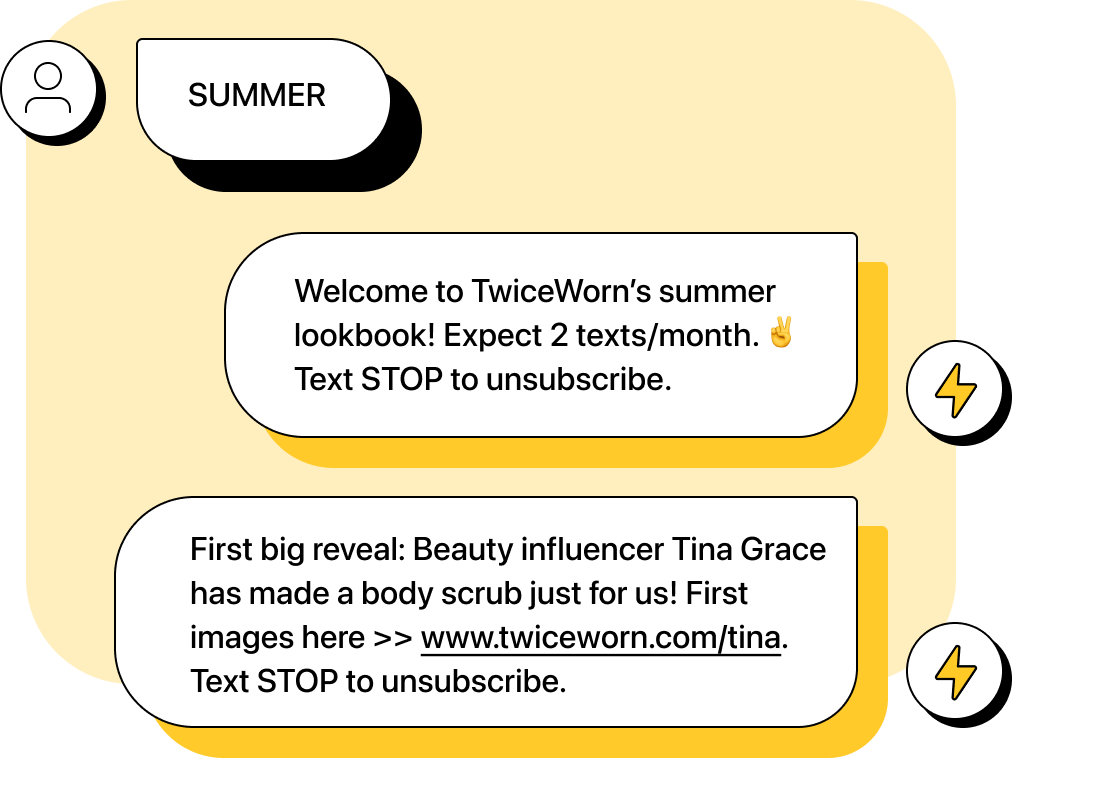
Automating texts from your personal phone
Personal phones don’t offer as many automation options. That being said, you can create a few basic workflows with iPhones and Android devices. Here’s how:
iPhone
You can create basic text automations with Apple’s personal automations tool. Here’s how to set up automated texts on your iPhone’s Shortcuts app:
- Open your Shortcuts app and tap “Automation,” the middle option on the bottom bar.

- Tap the plus sign in the top right of your screen, then choose “Create Personal Automation.”

- Choose the specifics of the trigger. You can send texts at a certain time, in accordance with alarm or “wind down” events, based on where your device is located, after receiving an email or text, and more. Then, click “Next” in the top right corner.

- Choose “Send Message” from “Next Action Suggestions.”

- Tap and fill in “Message” and “Recipients,” then tap “Next.”
![An “Actions” menu. A bubble up top says “Send [Message] to [Recipients].” The “Message” and “Recipients” fields are empty.](data:image/svg+xml,%3Csvg%20xmlns=%22http://www.w3.org/2000/svg%22%20viewBox=%220%200%20277%20600%22%3E%3C/svg%3E)
- Review the automation and press “Done” in the top right corner.

As you can tell by the trigger options, this tool is particularly useful for automating personal messages.
Android
Depending on your device, there are several ways to send automated text messages on Android via multiple automation-specific and texting apps. Here are some of your best options:
- Check out your Android texting app’s features. There’s a chance your favorite texting app will have built-in auto-response functionality. Pulse SMS, for example, offers this advanced feature.
- Set up the SMS Auto Reply app. This tool gives you a step-by-step automation overview once you’ve downloaded it. You can create auto replies for certain lists and choose a schedule, including running on weekends or when Bluetooth connects with your car.
- Use the Textra app. With this tool, you can schedule texts or create triggered texts based on variables like location and time.
There are plenty of other apps, too. Look for those that offer the most triggers so you can find one that fits your business use.
Leveling up communications with automated texts
Now that you know how to send automatic text messages, you can set them up in minutes and use them for years. But don’t forget to add personality to your messages. Whether you’re texting your friends or on behalf of a business, you should be careful to write with a casual tone and convey meaning through tools like emojis.
Professionals texting for businesses will also want to keep these best practices in mind:
- Start simple. Before you create an automated SMS drip campaign, set up your after-hours auto reply. Then you’ll feel more comfortable tackling advanced automations.
- Deliver value. All of your messages should provide some sort of value to your customers. Focus on marketing texts that match leads’ interests and focus on service, and your contact lists will remain long!
- Use advanced controls strategically. With enhanced automations, you can set delays, track responses, and trigger messages based on real-time contact updates. Use these tools to create smarter, more targeted experiences that scale.
Automated texts help you reach your contacts right when you need to, without losing that personal touch. Implemented the right way, they add more punch to marketing campaigns while cultivating stronger customer relationships.
Want a deeper understanding of SMS automations? Check out our automated texting guide.




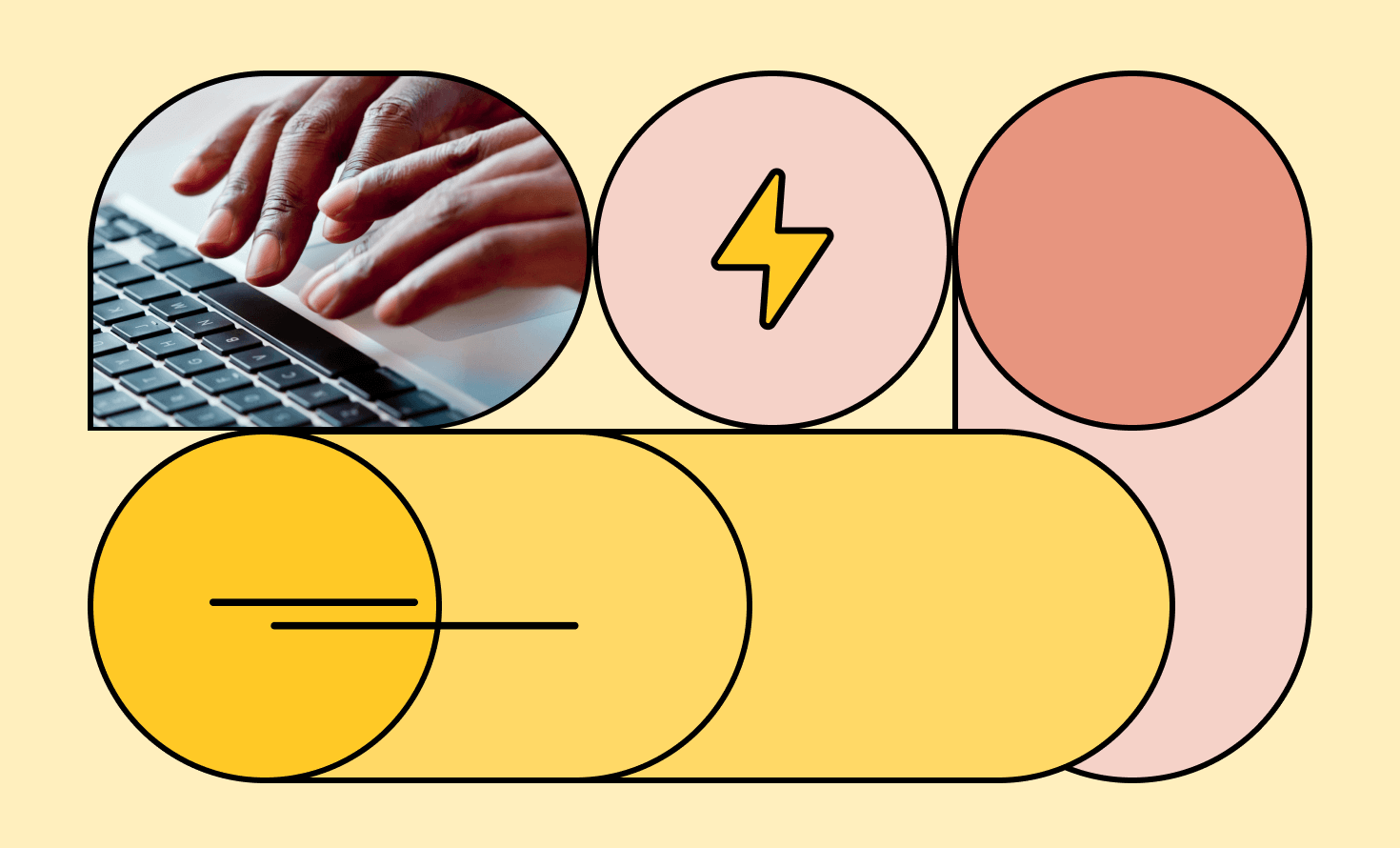
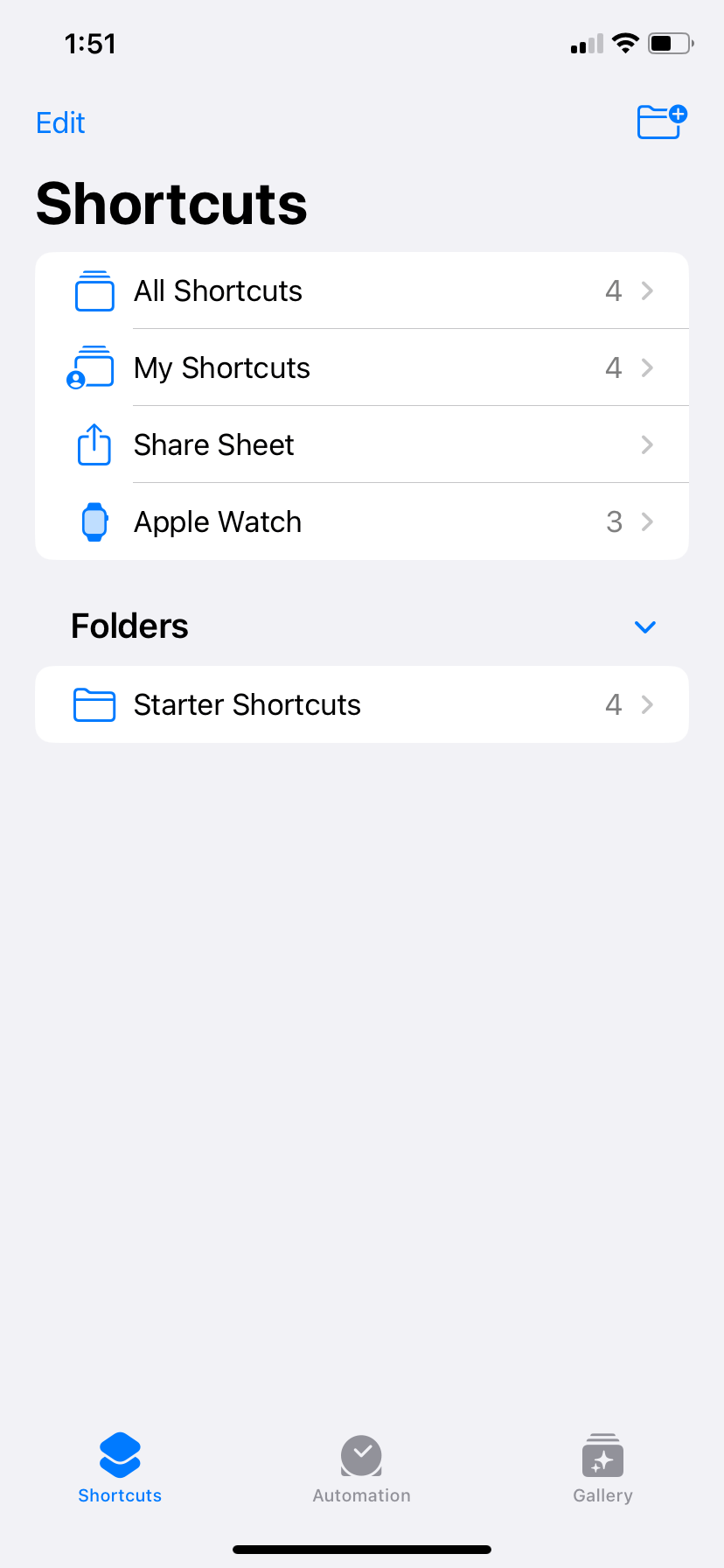
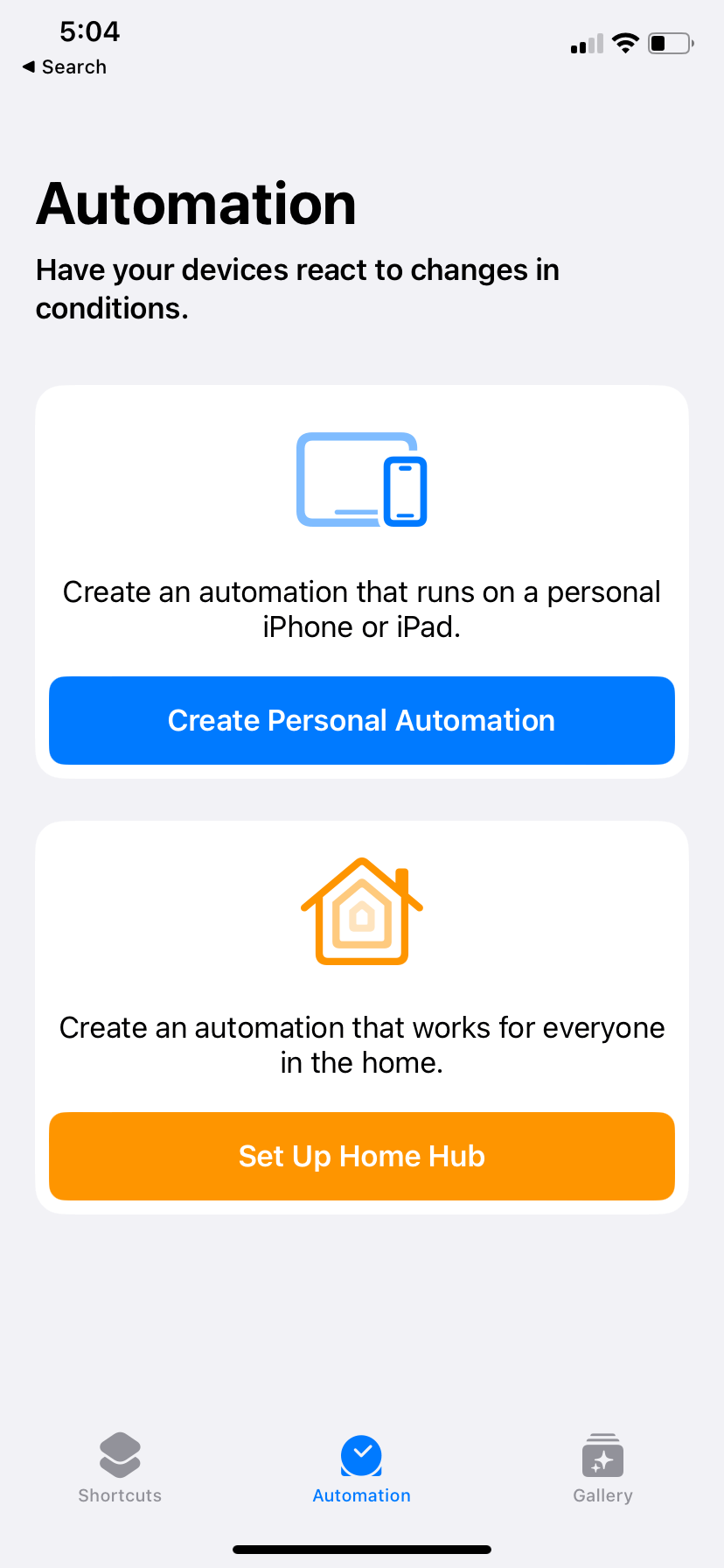
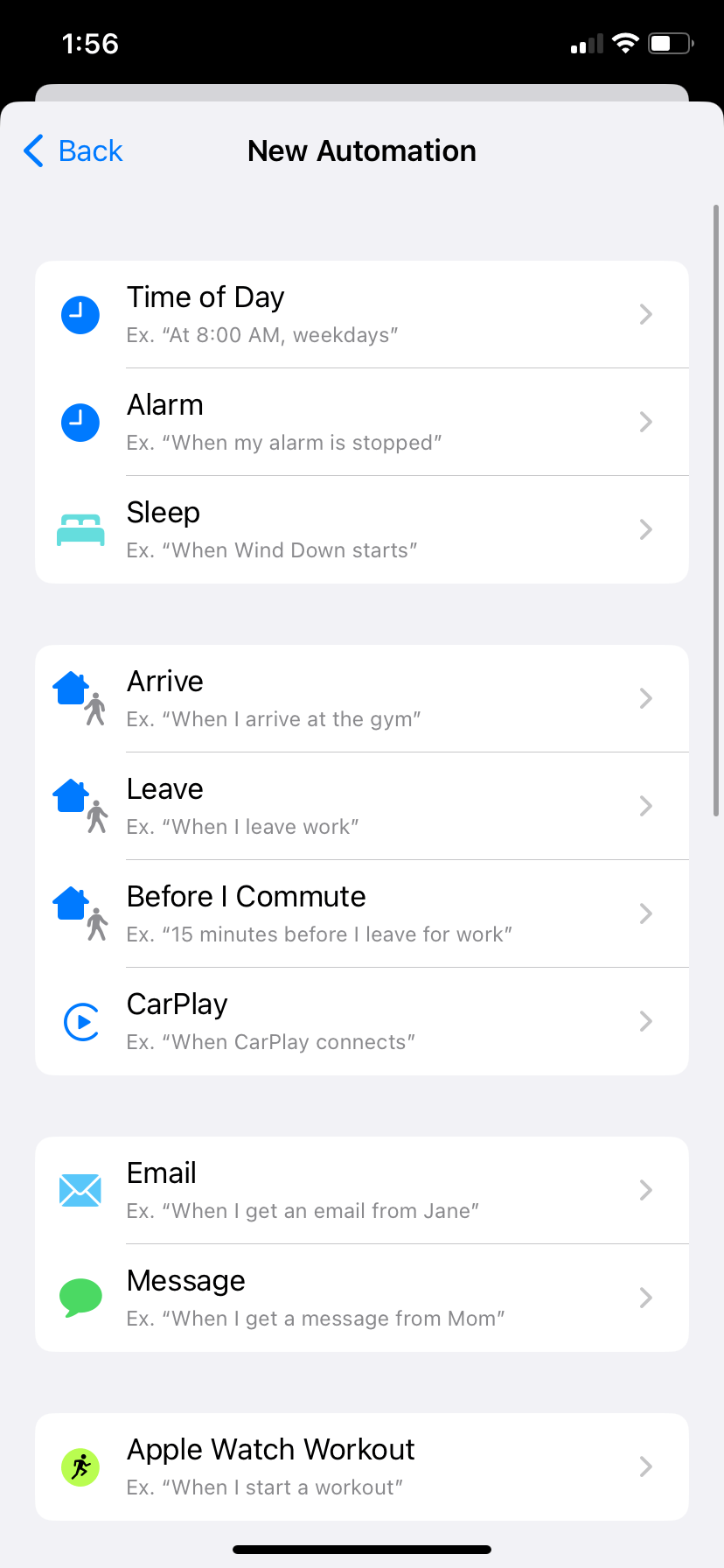
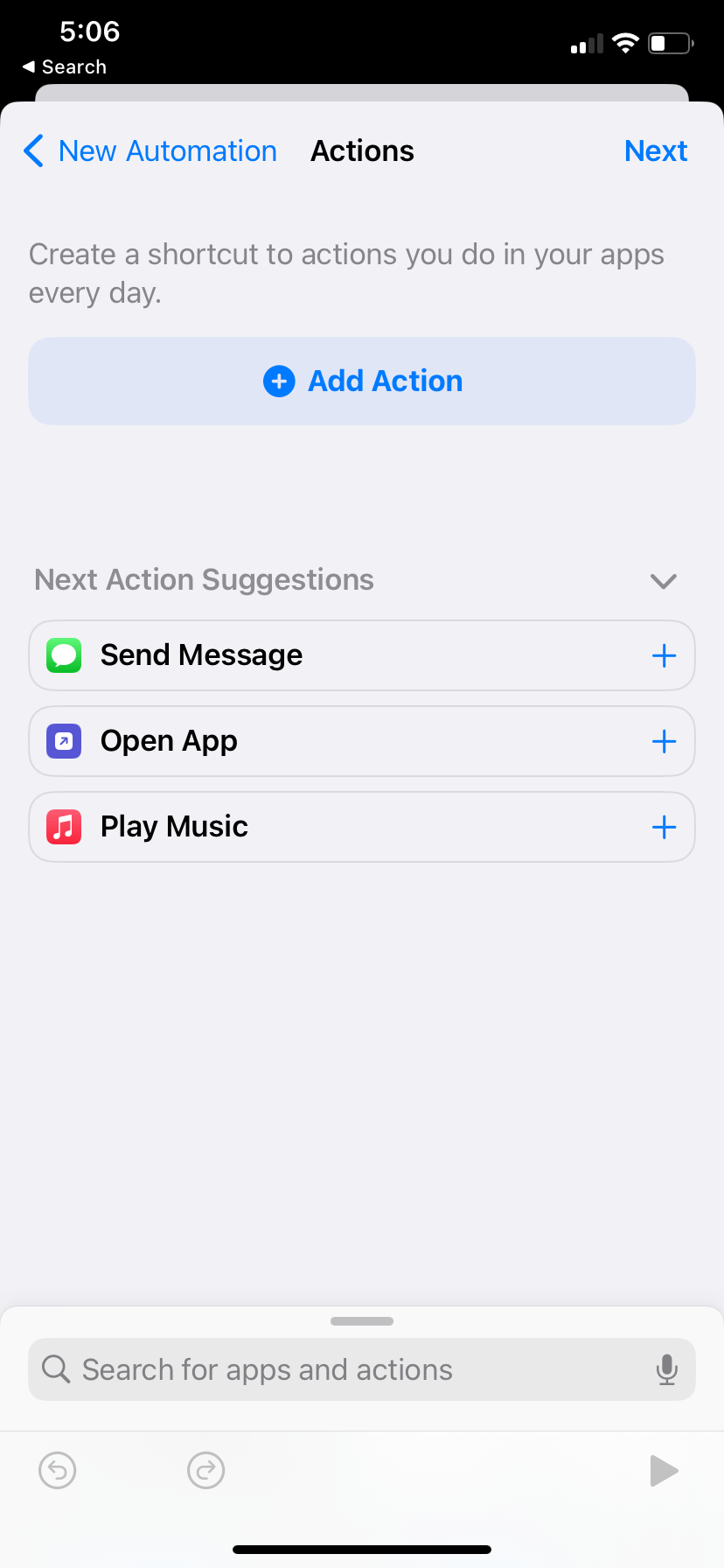
![An “Actions” menu. A bubble up top says “Send [Message] to [Recipients].” The “Message” and “Recipients” fields are empty.](https://www.heymarket.com/wp-content/uploads/2023/06/Step5_iPhone.png)
